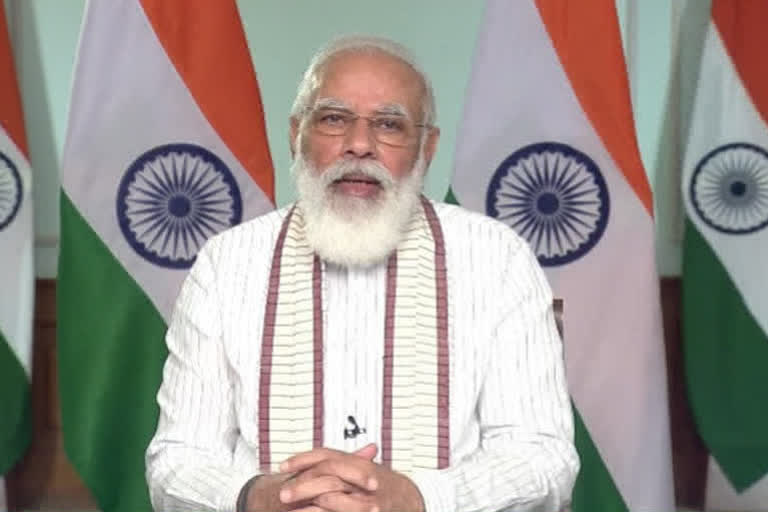New Delhi:Prime Minister Narendra Modi studied past pandemics and their impact during the early days of lockdown to firm up the country’s strategy against the deadly Covid-19 virus. And he decided to save lives over livelihoods, believing that economy could be rebuilt later if the government succeeds in saving lives by ramping up health care facilities, a strategy which also included his idea of converting rail coaches into Covid care centres to handle a possible outburst of the disease in rural India, revealed Union minister Piyush Goyal.
“From end March to end June we saw the economy came to a standstill except a few essential sectors, by and large the country was in a complete lockdown. It had its toll on the economy, Prime Minister Modi was very clear that if we can save lives we can always rebuild the economy,” said Piyush Goyal.
Highlighting Prime Minister Narendra Modi’s strategy, Goyal said it would have been an irretrievable loss if the country had lost a large number of people under the stress of saving the economy.
Goyal, who holds the dual portfolio of railways, and commerce and industries ministries, says Prime Minister Modi’s strategy was also to develop the country’s own capacity to fight the pandemic.
“We had just one lab with 250 tests per day capacity then, and today we are doing 1.5 million tests a day which has helped us to get a grip on the Covid story as it panned out,” Goyal Tuesday told audience in a programme organised by London based financial services group IHS Markit.
Study of past pandemics, use of railway infrastructure
Goyal said Prime Minister Modi was studying the impact of other pandemics in March this year when the infection rate in the country was still extremely low.
“In early March when we had just 400-500 cases, he was all the time studying what happened in the past pandemics, what happened in the past, and the problems the world faced,” Goyal informed.
Goyal said he was shocked by the Prime Minister’s suggestion to convert railway coaches into Covid care centres but later he realised that it was the only way to provide healthcare to India’s vast rural population in the event of a major surge in Covid cases in hinterland India.
“It hit me like a thunderbolt because Railways is supposed to transport people,” Goyal told the audience, adding that when his team sat down to study the proposal they realised it was a fantastic idea.
“Think about India's 6,00,000 villages, it is nearly impossible to take medical facilities to interiors of India or to move the patients to city hospitals in the event of a wide outburst of Covid in our villages,” he said.
According to the last census conducted in 2011, over 830 million people, more than two-third of the country’s population, lived in the country’s over 6,40,000 villages. Population size in these villages varies hugely, from 500 persons to over 10,000 in some large villages and health care facilities in the vast number of villages are virtually non-existent.
“By converting our coaches to care centres we could move them across the length and breadth of the country as we have railway stations across the country and provide Covid care to them,” Goyal explained the rationale behind Prime Minister Modi’s idea of converting the railway coaches into Covid care centres.
By June this year, Indian Railways was able to convert over 5,200 coaches into Covid care centres with a facility to treat 16 mild Covid patients in each coach.
In June, the Centre also provided over 500 such converted coaches to the Delhi government when the Union territory faced a surge in the number of Covid cases.
Tracking Oxygen supply
